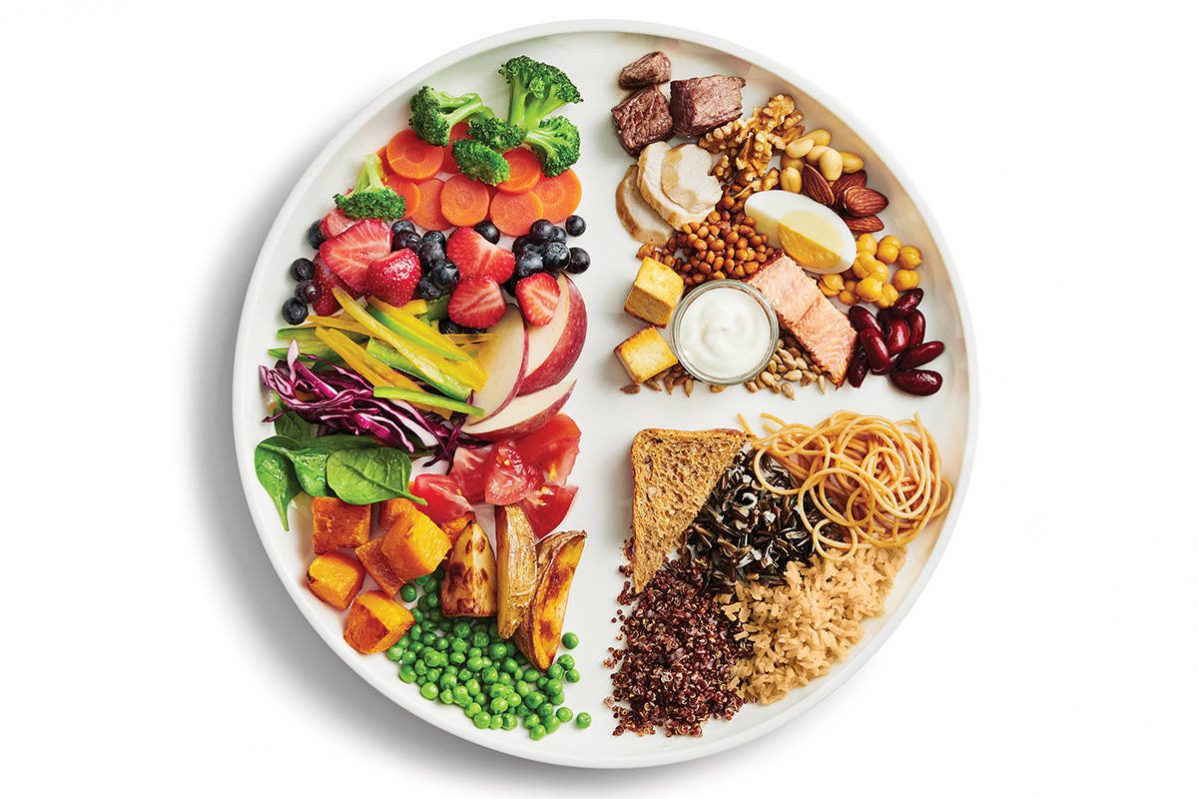Canada’s new food guide is the recipe for a happy and healthy lifestyle
Health Canada tossed aside the fixation on food groups and serving sizes and took a more concise look at what people should eat with its new food guide.
Released in January, the food guide retires the food group model, which recommended that meals should be served in careful portions of fruits and vegetables, grains, meat, milk, and any plant-based alternatives.
Instead, the new guide encourages people to eat plant-based foods, drink more water, and cook more at home.
The 2019 guide includes recipes, tips for people eating on a budget, and advice on how to implement healthy eating habits into your own life, which stemmed from extensive consultations with stakeholders from various communities across Canada.
It further suggests that people should eat meals with others, read food labels, practice mindful eating habits and be aware of food marketing campaigns.
The end result is a holistic approach to healthy eating by providing recommendations on food choices and habits.
“Over my career, I’ve had three different food guides and I can say of the three, this one was definitely my favourite,” said Dr. Linda Gillis, a dietitian and nutrition professor at George Brown College (GBC). “It’s very different than what we’ve seen before.”
The 2019 food guide recommendations will be integrated into the culinary programs offered at the college, Gillis said.
She noted that the GBC’s culinary school makes it a practice to familiarize students with Canada’s food guide and encourage them to think about how it differs from other international guidelines.
Here are the big takeaways from the newly revamped food guide.
Making healthy food choices
1. Eat vegetables, fruits, whole grains, and proteins
Rather than focusing on portions from each food group, the 2019 guide suggests eating meals rich in vegetables and fruits, whole grain foods and plant-based protein.
Some new suggestions include swapping rice for quinoa and opting for whole-grain options when available.
Gillis doesn’t recommend processed grain because it loses fibre, which is essential for the prevention of diseases and optimizing our bowels.
Legumes such as beans, nuts, and peas are the recommended choice for protein options. Meat-eaters should opt for diverse sources of lean protein like chicken and turkey.
“We should teach people about the variety in meat and not something like having red meat every night, we just want more of that balance and that variety,” said the dietitian.
Gillis explains that cutting down on meat can prevent a variety of disorders and chronic diseases like diabetes, heart diseases, and hypertension.
2. Limit processed foods
Highly processed foods include anything from french fries and pizza to bakery products, sausages, and sugary drinks.
The new guide reports that extra sodium is often added to foods for preservation and taste.
A high-sodium diet can lead to higher blood pressure, which is linked to heart diseases.
Processed foods are also rich in saturated fats, which is a leading cause of heart diseases. They should be replaced with healthy fats such as olive, canola, sesame seeds, and soybean oils.
3. Drink more water
Previous versions of the food guide suggested milk and fruit juice as suitable options for beverages. However, the new guide focuses on making water your number one choice.
The 2019 guide provided a number of suggestions on how to make drinking water more fun, such as adding flavour using fruits and herbs or drinking herbal teas.
Increasing water intake is known to boosts energy levels, combat hunger, and improves muscle function and the appearance of your skin.
The problem with passing up milk for water, according to Gillis, is that you are also passing up on calcium and vitamins. Consuming more leafy greens, nuts, and beans is the solution to that, she said.
Getting into the right eating habits
While making healthy food choices is one thing, the new food guide also stresses the importance of healthy eating habits.
Healthy eating habits are less about what you eat and more about how your food is made, where you’re eating and when and why you’re eating it.
Follow these tips for healthy eating habits.
1. Develop a routine and stick to it
Get into the habit of timing and spacing your meals properly. This will prevent you from over or under-eating. Know when you are hungry and whether you require a full meal at that time or just a snack.
2. Ditch the take out
The 2019 food guide encourages people to eat home-cooked meals.
By cooking your meals at home, you know exactly what you’re consuming and have more control about your food choices.
Planning your meals in advance can save you time and allows you to put some thoughts into balancing your meals.
If you are eating out, the new food guide encourages you to choose healthier options.
3. Enjoy your food
Eating healthy doesn’t have to be a drag. The 2019 guide encourages people to experiment with flavours, new recipes, and new ingredients.
Health Canada suggests socializing at mealtime, trying different cultural cuisine and preparing your meals with others.
For more information, Canada’s 2019 food guide and suggested recipes can be found online at food-guide.canada.ca
With files from Kevin Goodger


